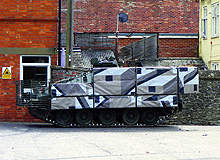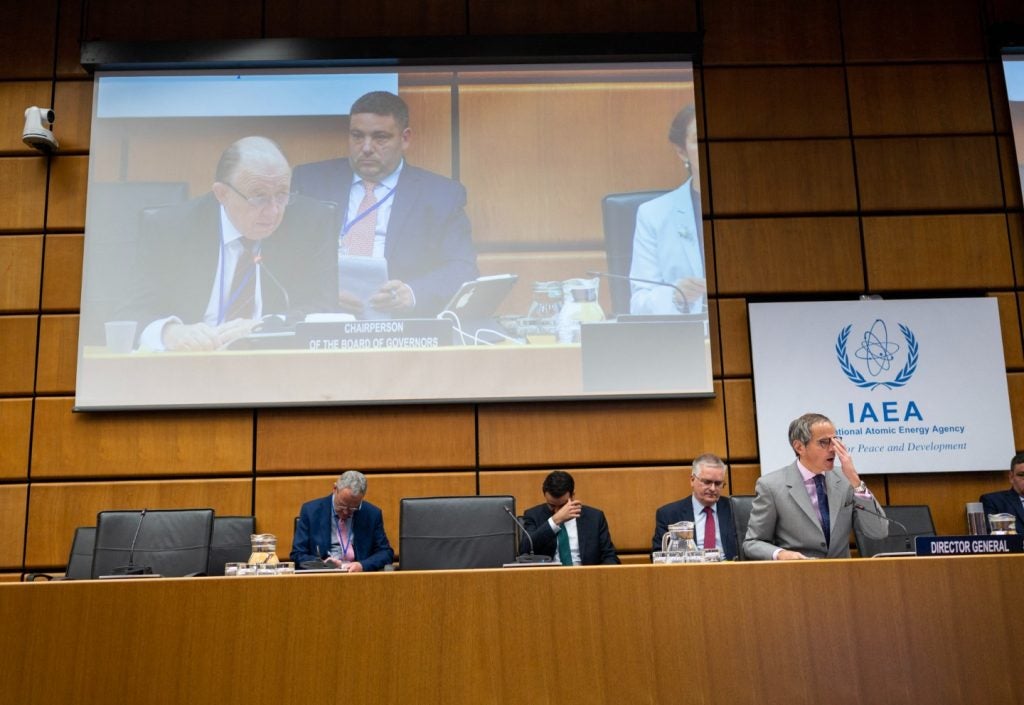
In April, the Defence Science and Technology Laboratory (DSTL) became the key focus of science and technology within the UK Ministry of Defence (MoD), working in conjunction with academia and industry to create battle-winning technologies for UK troops.
Part of DSTL’s remit is to develop original, highly effective vehicle and body armour to ensure equipment and personnel have the highest levels of protection against enemy threats as possible. Bryn James, who leads DSTL’s Armour and Protection Science and Technology Centre (STC), says: "We’ve just awarded more than £670,000 to industry and academia to develop ideas that could lead to improvements to both body and vehicle armour on the frontline. A key aspect of the work is that if we find a great idea, that’s really going to make a difference, we can quickly pull and push the innovation through to full exploitation."
The DSTL Armour and Protection STC encourages ideas from industry, large and small, research institutes and academia to make sure the Ministry of Defence has access to the widest number of armour and protection technologies.
James adds: "We’re looking for ideas that are going to make a step change in our current armour and protection kits and systems – real revolutionary research. Much of this work is looking at lighter body armour that is more comfortable to wear. For example, we’re looking at new recipes for the various body armour materials, to reduce the burden associated with them."
Supercapacitors
See Also:
One area DSTL is researching is novel supercapacitor materials that can hold an electric charge, which could help to reduce the weight troops have to carry. These could be integrated into many materials from textiles used in clothing to materials integrated into vehicles, replacing heavier conventional batteries. In areas where climate is arid and hot, such as Afghanistan, minimising physical strain on servicemen and women is a critical factor to ensure efficiency and effectiveness of military operations.
How well do you really know your competitors?
Access the most comprehensive Company Profiles on the market, powered by GlobalData. Save hours of research. Gain competitive edge.

Thank you!
Your download email will arrive shortly
Not ready to buy yet? Download a free sample
We are confident about the unique quality of our Company Profiles. However, we want you to make the most beneficial decision for your business, so we offer a free sample that you can download by submitting the below form
By GlobalDataPaul Curtis, a senior fellow at DSTL, says: "Novel supercapacitor materials at the forefront of new material ideas could be incorporated in the structure of any military equipment from inside engines or on plane wings to military buildings, even the clothing worn by personnel.
"The composite structural supercapacitor material we are looking at with industry and academia could be used in the spall lining of armoured vehicles, not only to help protect the occupants from any flying fragments should the vehicle be hit, but also to run the vehicle’s electric armour systems. The supercapacitor material would be charged – in a similar way to plugging in a mobile phone – and then the stored energy discharged in one powerful event.
"Alternatively, we’re looking at ways this energy could be used more steadily. That might mean charging up structures, even clothing, to run other electrical equipment such as radios or computers. In civilian applications, this supercapacitor material could mean the charged outer casing of a laptop or mobile phone is actually running the device, as well as reducing the weight by at least a third. For hybrid cars it could mean the structure of the vehicle acts as the supplementary power source to the engine, avoiding the need to carry the weight of batteries."
Material advantages
DSTL works with MAST, a consortium of industry and academia, led by QinetiQ with BAE Systems and Imperial College London as core partners. MAST has 26 other associate partners spanning academia, industry, small and medium enterprises (SMEs), and research institutes.
The MAST consortium is looking at all leading-edge materials which could create battle-winning advantages for UK armed forces. This includes low observable materials, coatings or materials that can’t easily be detected using acoustic, infrared or radar devices. This could mean advanced lightweight materials that absorb radar energy or materials that change the signature of a vehicle or person meaning it is more difficult to detect.
DSTL, together with MAST members, also looks at smart materials and active structures, structural materials for military equipment and issues relating to through-life capability management (TLCM).
Smart materials and active structures, includes materials that self-heal or change shape. Curtis adds: "Practical materials that morph into other shapes or self-healing materials are available in the lab now and will soon be in use in military equipment, in say five to ten years. This could mean that damage in service to perhaps an aircraft wing, for example from an accidental bird strike or ballistic impact, could be stopped from getting worse, perhaps even partially restoring performance."
These materials, known as composites, are modified fibre-reinforced plastics. Composites such as carbon fibre reinforced epoxy resins are already widely used in current aircraft such as the Typhoon Eurofighter and the joint strike fighter and are likely to feature even more extensively in future unmanned air vehicles.
Self-healing structures
In modified composites, one of the self repairing mechanisms being studied is mimicking nature, since natural organisms have a significant degree of self-repairing capability. Curtis continues: "The composite materials in development have a network of vascular structures to deliver repair materials to the site of any damage. It is hoped these could help restore the mechanical properties of military equipment and reduce the need for expensive repairs and withdrawal from service."
Research into self-healing materials is part of DSTL’s work with the University of Bristol and Imperial College London, partly through the MAST consortium but also through a jointly funded project with the Engineering and Physical Sciences Research Council (EPSRC) called Crashcomps.
DSTL works with a range of companies, universities and SMEs, as James summarises: "We want the brightest and best people with great ideas for innovative research that is going to provide future options for our force protection."
Companies and universities from all over the UK have received funding from DSTL to research new developments that can provide the battle-winning edge and much of this backing has reared tangible results.
Advance Defence Materials has researched the viability of an auxetic yarn – a material that gets thicker as it is stretched. The Rugby-based SME believes that these materials could be used in combat clothing with the capability of resisting fragmentation, while remaining stretchy and comfortable to wear.
Two programmes of research undertaken by BAE Systems have also been based in material research. One involves shear thickening fluid (STF) technology and a potential material that is flexible but becomes rigid when struck, the second combines layers of materials in an interlocked sandwich, enhancing strength and toughness.
Nature has proved to be the inspiration for researchers at the University of Bristol who have turned to mollusc shells for a design template. The nacre-like tiles, a bit like the layers inside a shell, could absorb energy over a large area as the internal cells collapse pulling in neighbouring tiles.
This article was first published in our sister publication Defence & Security Systems International.





